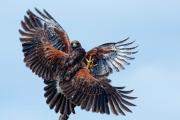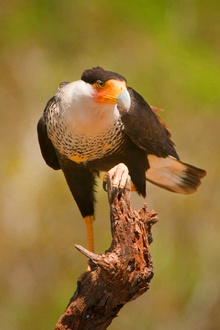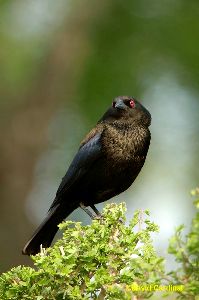- Photo Safaris
- Alaska Bears & Puffins World's best Alaskan Coastal Brown Bear photo experience. Small group size, idyllic location, deluxe lodging, and Puffins!
- Participant Guestbook & Testimonials Candid Feedback from our participants over the years from our photo safaris, tours and workshops. We don't think there is any better way to evaluate a possible trip or workshop than to find out what others thought.
- Custom Photo Tours, Safaris and Personal Instruction Over the years we've found that many of our clients & friends want to participate in one of our trips but the dates we've scheduled just don't work for them or they'd like a customized trip for their family or friends.
- Myanmar (Burma) Photo Tour Myanmar (Burma) Photo Tour December 2017 -- with Angkor Wat option
- Reviews Go hands-on
- Camera Reviews Hands-on with our favorite cameras
- Lens reviews Lenses tested
- Photo Accessories Reviews Reviews of useful Photo and Camera Accessories of interest to our readers
- Useful Tools & Gadgets Handy tools and gadgets we've found useful or essential in our work and want to share with you.
- What's In My Camera Bag The gear David Cardinal shoots with in the field and recommends, including bags and tools, and why
- Articles About photography
- Getting Started Some photography basics
- Travel photography lesson 1: Learning your camera Top skills you should learn before heading off on a trip
- Choosing a Colorspace Picking the right colorspace is essential for a proper workflow. We walk you through your options.
- Understanding Dynamic Range Understanding Dynamic Range
- Landscape Photography Tips from Yosemite Landscape Photography, It's All About Contrast
- Introduction to Shooting Raw Introduction to Raw Files and Raw Conversion by Dave Ryan
- Using Curves by Mike Russell Using Curves
- Copyright Registration Made Easy Copyright Registration Made Easy
- Guide to Image Resizing A Photographers' Guide to Image Resizing
- CCD Cleaning by Moose Peterson CCD Cleaning by Moose Peterson
- Profiling Your Printer Profiling Your Printer
- White Balance by Moose Peterson White Balance -- Are You RGB Savvy by Moose Peterson
- Photo Tips and Techniques Quick tips and pro tricks and techniques to rapidly improve your photography
- News Photo industry and related news and reviews from around the Internet, including from dpreview and CNET
- Getting Started Some photography basics
- Resources On the web
- My Camera Bag--What I Shoot With and Why The photo gear, travel equipment, clothing, bags and accessories that I shoot with and use and why.
- Datacolor Experts Blog Color gurus, including our own David Cardinal
- Amazon Affiliate Purchases made through this link help support our site and cost you absolutely nothing. Give it a try!
- Forums User to user
- Think Tank Photo Bags Intelligently designed photo bags that I love & rely on!
- Rent Lenses & Cameras Borrowlenses does a great job of providing timely services at a great price.
- Travel Insurance With the high cost of trips and possibility of medical issues abroad trip insurance is a must for peace of mind for overseas trips in particular.
- Moose Peterson's Site There isn't much that Moose doesn't know about nature and wildlife photography. You can't learn from anyone better.
- Journeys Unforgettable Africa Journeys Unforgettable -- Awesome African safari organizers. Let them know we sent you!
- Agoda International discounted hotel booking through Agoda
- Cardinal Photo Products on Zazzle A fun selection of great gift products made from a few of our favorite images.
- David Tobie's Gallery Innovative & creative art from the guy who knows more about color than nearly anyone else
- Galleries Our favorite images
South Texas Birds--Rio Grande Valley Private Ranches April, 2017
Date:
Tuesday, April 25, 2017 - 18:00 to Monday, May 1, 2017 - 08:00
[Maximum 6 photographers, Spots open]
LAST-MINUTE SALE: $400 Off this popular workshop!
 For the avid bird photographer, nowhere in North America is better than the top private ranch photography in the Rio Grande Valley of Texas. Photographer-friendly blinds sited in a natural environment make for some of the best woodland and desert bird photography anywhere. We're returning for our 8th year, with another top-of-the-line small-group workshop this year. Once again we'll also be hosted right on the ranches, with excellent accommodations, home cooking, a big-screen TV for teaching and looking for images, and an air-conditioned lounge area for relaxing and editing between shooting sessions.
For the avid bird photographer, nowhere in North America is better than the top private ranch photography in the Rio Grande Valley of Texas. Photographer-friendly blinds sited in a natural environment make for some of the best woodland and desert bird photography anywhere. We're returning for our 8th year, with another top-of-the-line small-group workshop this year. Once again we'll also be hosted right on the ranches, with excellent accommodations, home cooking, a big-screen TV for teaching and looking for images, and an air-conditioned lounge area for relaxing and editing between shooting sessions.
We'll have 4 full days (and an optional 5th full day) with exclusive use of the premier award winning Dos Venadas and Campos Viejos ranches which are only open to guided groups. Hardy Jackson, our co-host, won the most recent Valley Land Fund photo contest on his ranch, Campos Viejos so you'll have every chance to take similar award-winning images (most recently this Harris Hawk image shot on a previous trip won the Grand Prize in the 2012 NWF Photo Contest.) You're pretty-much guaranteed to add some great photos to your life list.

We have a wide selection of blinds, some situated for morning light, and some for the afternoon. They feature a variety of backgrounds, all with native habitat, and options for different distances, to accommodate just about any length lens. I'll work with you to set up additional perches (although there are some excellently placed living bushes, trees, and cacti at the blinds already). All the blinds also have water features to help attract birds in from the desert environment. Along with the blinds designed primarily for song birds and desert birds, we'll have the use of both morning and afternoon raptor blinds, where we'll see Harris Hawks, Crested Caracara, and of course a variety of other birds.
At the "cactus blind" we'll probably get some chances at Cactus Wren singing on top of the large cactus backdrop. The "Pond blind" features lots of bathing birds, often including Painting Buntings, Scissor-tailed Flycatchers, and a variety of Warblers and desert birds including Roadrunners. Several sunken blinds offer eye-level shooting of ground birds including Bobwhite and Scaled Quail, as well as several varieties of Thrashers and Doves. All blinds have indoor-outdoor carpeting to help protect our gear, along with chairs and cushions to help protect us. Birds are actively fed year round, so they are very much used to coming to the blinds. Even the raptors are fed through the spring season so we don't lose any time waiting for them to discover us.

Trip Background: Wherever you've photographed before in the US, you'll be awed by South Texas. With a density and diversity of bird species matched only by a couple remote areas of Africa, the four counties making up "The Valley" as south Texas along the Rio Grande is called offer over 600 species of birds including 30 endemic species. Better yet, many of these birds are colorful and spectacular to look at.
By itself the presence of birds is not enough to create a photographic opportunity. We've all been to "birdy" locations where the birds were heard and not seen, or seen only through a scope. But fortunately for bird photographers, several of the ranch owners in southern Texas have created photo paradises within their ranches by adding feeders, watering holes and photographer friendy blinds. The most well known of these groups is Texas Lens & Land, the brainchild of long-time photographers and conservationist John Martin as well as Steve Bentsen, who now manages the loosely organized group.
You can see some of my other favorite images in our online photo galleries.
Read what some of our previous workshop participants have to say about their experience.
All trips are led personally by award-winning travel and nature photographer David Cardinal. Learn more about his background.
Experience some of the joy of Texas bird photography with this short video,
made from some of my favorite photos from our workshop trips:

Pricing: The safari fee of $2250 SALE: $1850 includes all ranch fees (these are private properties which the owners have put a tremendous amount of effort into making bird photography paradise, so shooting on them is not inexpensive), guide fees and photo instruction, both in the field and workshop sessions on digital workflow and image editing as well as lunch for the four days we'll be shooting. For those interested we are also providing accommodations for a limited number of participants in an exclusive lodge right on the property for $1375 per person double occupancy ($200 discount for a companion sharing), including 5 nights of lodging, all meals, drinks, snacks as well as local transportation and pick up and drop off at the airport. If you have your own transportation but would like to stay at the lodge the room we offer a $250 per person discount off that amount. Or you can stay in nearby Rio Grande City and drive up to the ranches each day.
If you can join us for the 5th day of shooting, it is an additional $250 for the day, including lunch, and (optionally) $250 for lodging, meals, and transportation.
You can Sign-up online or by giving us a call at +1.650.851.8350.
If you have questions, please give us a call or email us: safaris [at] cardinalphoto.com.
Sign up by October 31st and receive an Earlybird discount of $200!
You can sign up online or by calling us

at Raptor blind
How the trip came about (or "How I fell in love with South Texas"): Moose Peterson and I were fortunate enough to be able to spend a few days shooting on the Lens & Land ranches in 2006, including Steve Bentsen's ranch. In my case I was looking for new destinations for my photo safaris as well as great images of hard to get species for my own files and after a week there I was totally sold. The species diversity combined with the improvements made for photographers and the local hospitality make the location a no-brainer winner. In a few days of shooting we got stunning images and captured commercial quality images of 39 species of woodland birds. This year I brought a group of participants back for another exciting week. Migration was in full swing so we each recorded new species every day.
At all the ranches the feeding and watering stations were well designed with attractive backgrounds. In a semi-desert area like southern Texas water in particular is an incredible bird magnet. Birds you could spend days trying to find in the open will flock to a drip watering station. This enabled us to get nearly non-stop action most of the time. Several ranches also put out carrion at feeding stations designed to bring in raptors including the unique and colorful Crested Caracara and the hard to find Harris's Hawk.
Local specialties include Green Jays, Painted and Indigo Buntings, Curved-bill and Long-billed Thrashers, a variety of Sparrows and Orioles as well as the beautiful Great Kiskadee, Golden-fronted Woodpecker and many others. Between sessions photographing birds we were also treated to views of mammals including Coyotes and Javelina.
I'm always skeptical about photo blinds. There are so many ways to build them wrong that they can often be more trouble than they are worth. But the blinds on the Lens & Land properties are a joy to use. They are comfortable, with chairs and even outdoor carpeting in some. And using the blinds allowed us to be quite close to the action at the carefully situated feeders and watering holes. That not only allowed us to photograph some species which might not have approached if we were out in the open but allowed me to be very effective with my 200-400mm lenses--while allowing those participants with 500's or 600's plenty of room to work.
If you have it, make sure to bring your macro gear as well. Cactus flowers will be in bloom and make for some great "flower portraits". Plus there are all sorts of little creatures if you're interested in photographing them.
 Bronzed Cowbird |
Trip Itinerary: Day 0: Arrive in McAllen (airport or drive). Head out to the lodge for a welcome dinner for those staying with us at the Lodge. Day 1-4 (optionally day 5): 4 or 5 days of shooting on private ranches inter-mixed with some workshop sessions on digital workflow and image editing--along with plenty of great home-cooked food along with the ever popular "happy hour" each evening. Last Day: Transfer back to McAllen airport or we have lots of other good ideas for bird photo destinations in the Rio Grande Valley you're of course welcome to explore. |
(the trip has sold for four straight years, so try to plan soon! You can Sign-up Now)
For more information:
E-mail: safaris [at] cardinalphoto.com
or Call +1.650.851.8350
IMPORTANT NOTE: [[[http://www.cardinalphoto.com/site/insurance.htm height=420px scrolling=no]]]

